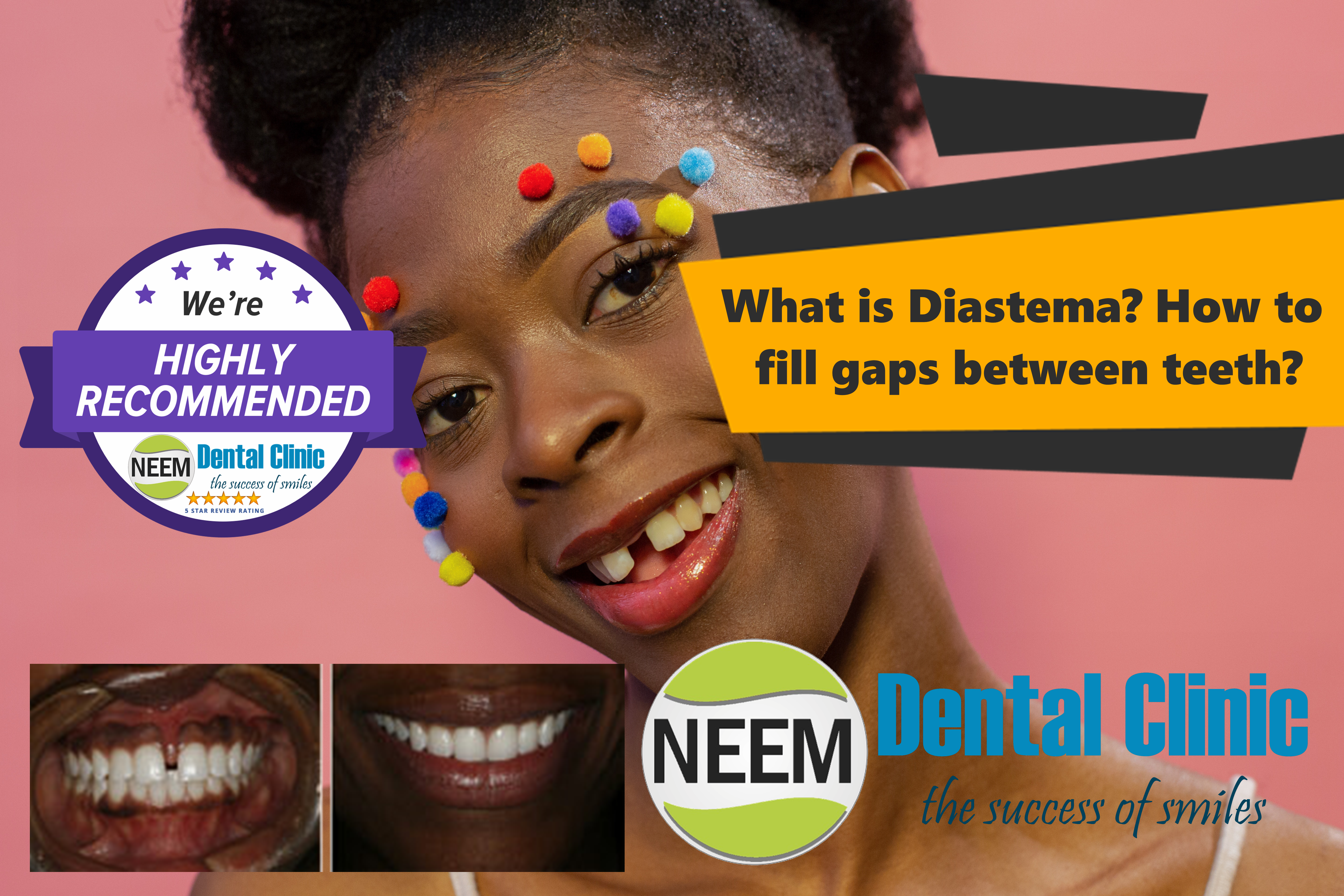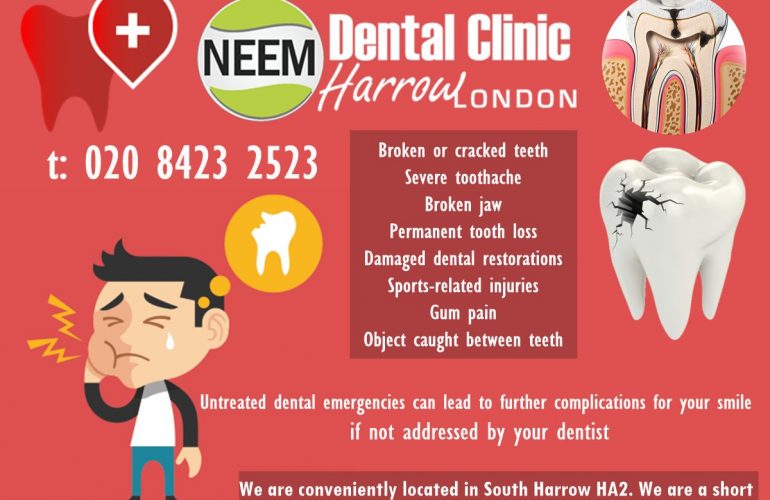When you have extra space between two or more of your teeth, your doctor calls this spacing issues or gap teeth. Gappy teeth are quite common, but sometimes they can become a bit of a bother. Maybe you don’t like the look of them or find that food gets trapped, causing issues with your gums. Gap teeth can create pockets between your teeth and gums where food can get stuck. It can make your gums tender and sore and even lead to gum disease. Fortunately, that gap doesn’t have to be permanent.
There are several treatments available for “gappy teeth” and fixing them carries both aesthetic and health benefits for your smile. In addition to orthodontics, a gap in your teeth can be corrected with restorative treatments such as composite bonding, porcelain veneers or crowns. Larger spaces with missing teeth can be restored with dental implants or bridgework.
Teeth gaps types
- There is a gap between your side teeth and front teeth only
- There is a gap around your canines on one side
- There is a gap between the front teeth
- There are gaps between all your teeth
Diastema causes
A gap between two teeth is known as a “diastema.” These gaps tend to appear between the two upper front teeth, but gaps can occur between any two teeth and there are several reasons why someone may have gappy teeth. Even if your teeth gaps don’t bother you from an aesthetic point of view, it’s important to get the diastema checked by a dentist in case a more serious condition like gum disease is the cause. Gaps in your teeth could also mean you have an improper bite, which can lead to chipped or broken teeth. A diastema may result from the following:
The size of the teeth in relation to the jawbone
If a person’s teeth are too small, relative to the size of their jawbone, gaps may develop between the teeth.
Jawbone and tooth sizes can be genetic, which is one reason that diastemas can run in families.
Missing or undersized teeth
If some teeth are missing or smaller than others, a diastema can develop.
This often involves the upper lateral incisors — the teeth to either side of the two upper front teeth. If the upper lateral incisors are missing or relatively small, a gap can develop between the two front teeth.
Oversized labial frenum
The labial frenum is the tissue that extends from the inside of the upper lip to the gum above the upper front teeth. If this tissue is especially large, it can cause a gap to form between these teeth.
Gum disease
Tooth migration is a typical sign of advanced gum disease. In people with gum disease, inflammation results in damage to the bone that supports the teeth. Eventually, the teeth may become loose, and gaps can appear.
Incorrect swallowing reflex
When the swallowing reflex happens correctly, the tongue presses against the roof of the mouth.
A person may instead push their tongue against their front teeth when they swallow. Over time, this repetitive pressure against the front teeth pushes them forward, causing a gap to form.
Habits
Thumb sucking, lip sucking, tongue thrusting, and similar habits can put pressure on the front teeth, pushing them forward. This can lead to diastemas.
Loss of primary teeth
Children can develop temporary diastemas when their primary teeth, or baby teeth, fall out. When their permanent, or adult, teeth come in, these gaps typically close.
This type of gap is common enough that dentists consider it to be a normal developmental phenomenon in children. No treatment is usually necessary A study reports older findings that these diastemas may be present in approximately two-thirds of children in whom only the central incisors have erupted. The central incisors are the two flat teeth at the front of the upper jaw.
When to see a dentist
People should speak to their dentists if they or their child have a diastema and are concerned about it. It is recommended that orthodontists evaluate all children by the age of 7. A dentist or orthodontist can diagnose the underlying cause and, if necessary, recommend a course of treatment.
How To Fix Gaps In Teeth
Treatment for a diastema may not be necessary — especially if the gap arises from a mismatch between the size of the teeth and the jawbone, or if it results from the loss of primary teeth. If treatment is not medically necessary, but the person wishes to close the gap for aesthetic reasons, a dentist can help determine the best approach. Here are some techniques that you can use to fix such gaps:
Orthodontic options
Modern orthodontic treatment is often used to reposition teeth that are crooked or overcrowded, as well as to close gaps between teeth and correct bite disorders. Some of the most effective options to fix a gap in teeth are:
- Lingual fixed braces, placed on the inside of the teeth, are just as effective in closing a gap as conventional labial braces and are out of sight even when smiling.
- Conventional labial (exterior) fixed braces offer the best value. The choice depends on personal preference and budget, as they can all achieve similar results. Traditional metal versions are less obvious than they used to be, and available with changeable coloured elastics for children. Tooth-coloured ceramic braces can be paired with clear crystal brackets that are virtually invisible.
- The Inman Aligner, a patented removable system, offers a quick, safe and great value solution for gently guiding front teeth into an ideal position. Removable clear braces – such as the Invisalign© – are becoming increasingly popular among adult patients seeking a discreet orthodontic treatment.
Invisalign
Invisalign braces are great for closing the gaps in your teeth as well as straightening crooked teeth. Although small gaps can be fixed using bonding and veneers, you should invest in Invisalign to close big gaps. Invisalign is a clear aligner that corrects your teeth without announcing its presence. It is expensive, but less expensive than traditional braces and it works to close the gaps between your teeth.
Dental Bonding
If you want a quick fix for large gaps, you should try tooth bonding. A tooth-colored resin will be applied to your tooth and hardened using a special light. In just a few hours, your tooth will look normal even if it was chipped or broken. Although the material used to make dental bonding is stain resistant to an extent, it is not as resistant as crowns.
Veneers and Crowns
A porcelain veneer refers to a thin shell that can be bonded to the front of your tooth. However, the dentist will remove a small portion of your enamel before attaching the veneer. On the other hand, dental crowns are designed to fit over most of your tooth. A crown is meant to fix damage caused by trauma or decay.
Dentures
This is a removable replacement for your teeth and you can opt for partial or complete dentures. People usually opt for dentures when they have removed several teeth and their overall health and that of their mouth is in question. If you have small gaps, these dentures will act as removable implants.
Implants
Dental implants can be either removable or fixed teeth that match your natural set of teeth. If you have a foot-tooth wide gap, you should opt for implants. An artificial enamel tooth will be inserted into your gum or bone. Skilled professionals are the only ones who can perform this medical procedure.
Surgery
When a diastema results from an oversized labial frenum, the dentist may recommend a frenectomy — a procedure to remove the excess tissue. Older children and adults may then require braces or another treatment to close the gap. In younger children, the space may close on its own.
Gum disease treatment
Gum disease requires treatment to stop the infection and prevent complications such as tooth loss.
Treatment may include scaling to remove tartar from the gums. Scaling also removes the bacteria causing the infection. In addition, topical or oral antibiotics may help.
In severe cases, surgery may be necessary to remove deep tartar from beneath the gums. Once the gums are healthy again, the dentist may use one of the above treatments to close the gap.
Prevention
It is not possible to prevent all cases of diastema. However, if gum disease or habits are the cause, it can help to practice good oral hygiene, by:
- brushing the teeth twice daily
- flossing daily
- seeing a dentist for regular examinations and cleanings
- avoiding thumb sucking and helping children break the habit
- correcting improper swallowing reflexes




